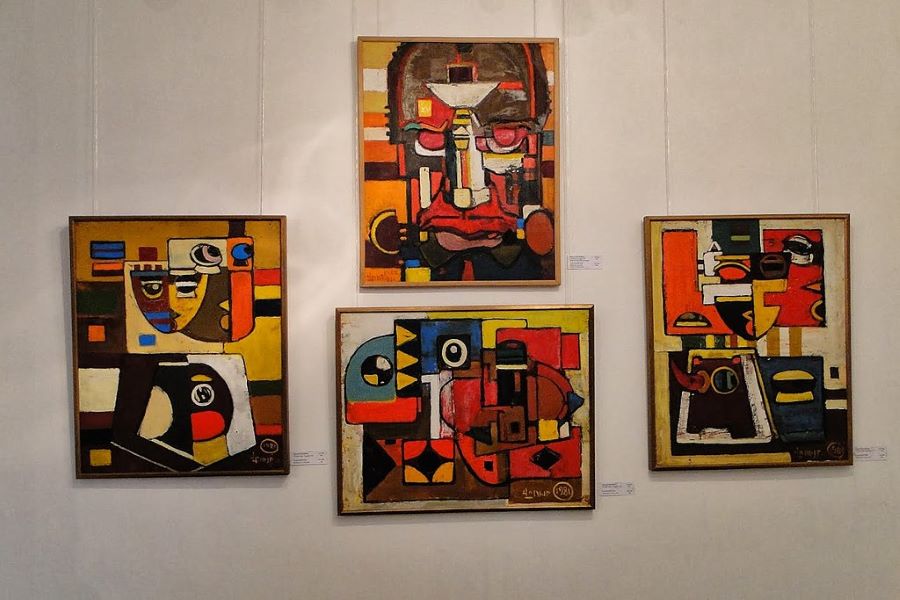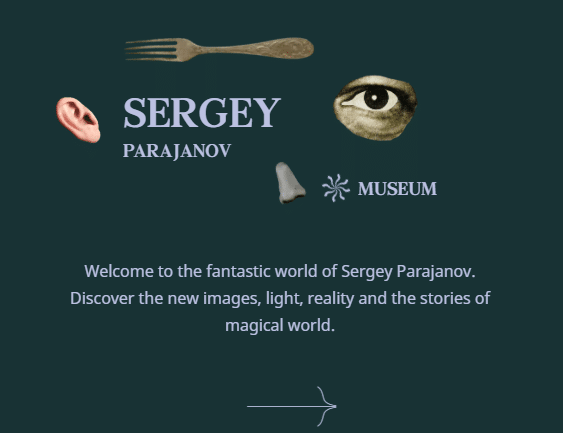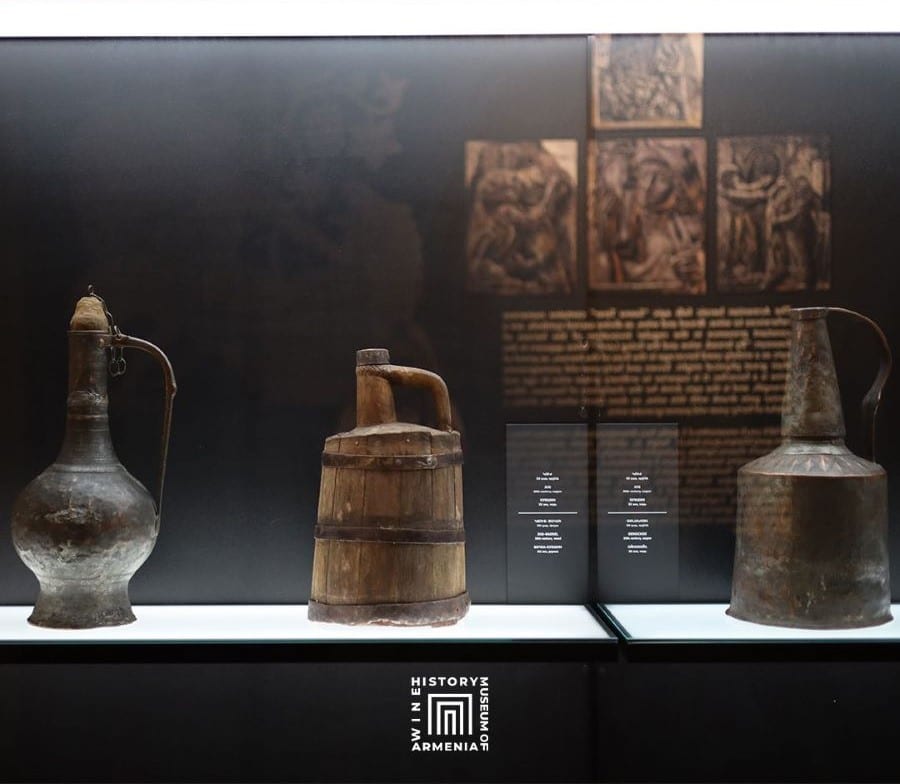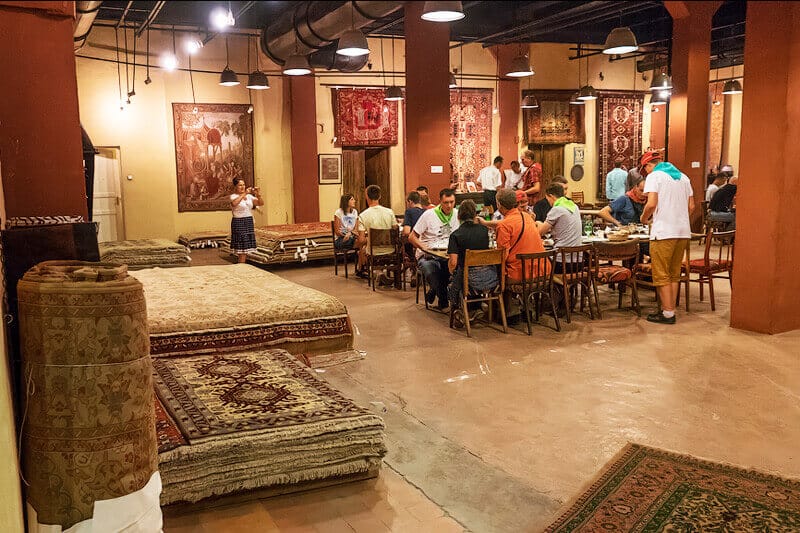
There are many museums in Armenia where tourists can find unique pieces unveiling the country’s rich cultural heritage. However, there are also some museums to visit in Armenia that stand out.
Some museums like Armenia’s Modern Art Museum open an avant-garde world of Armenian art. Others present collections that show the entire history of Yerevan, one of the world’s oldest inhabited cities.
This blog invites you to explore a list of must-visit museums, each offering a unique glimpse into Armenia’s rich past and creative present. Let’s see which collections and exhibits you can include in your art tour.
Modern Art Museum

Ranked among the top renowned museums in the region, the Modern Art Museum was founded in 1972 by the art critic Henrik Igityan. It was the first modern art museum in the Soviet Union. It boasts a comprehensive collection spanning the 20th and 21st centuries, showcasing Armenian sculpture and painting.
The core of the collection is the works by the generations of the 1960s. Among them are Minas Avetisyan, Rudolf Khachatryan, and others. The museum’s dynamic collection continually expands, thanks to generous donations. It’s a place for those who want to open the Armenian art from a different side. If you are interested in modernist art, you can also visit the Cafesjian Center for the Arts with its big collection of artworks.
Sergey Parajanov Museum

Although this museum has a collection belonging to world-famous filmmaker Sergey Parajanov it’s not solely a place to visit for film lovers. Here tourists can discover the life and artworks of one of the greatest masters of the 20th century.
Parajanov’s friend Zaven Sargsyan was behind the idea to open an exhibition. The filmmaker himself was also present at the opening. It was a success and later turned into a museum. The collection comprises 1,400 exhibits, including unique graphics, dolls, collages, and other pieces. During 30 years of its existence, the museum organized exhibitions around the globe starting from Cannes to Los Angeles.
Yerevan History Museum
Why can the museum dedicated to the history of Yerevan capture your attention? Probably due to the fact Yerevan has a history of more than 2800 years. Although it has changed different locations, it now found its home in the Yerevan Municipality building. Having approximately 94,000 exhibits, the museum’s collection spans archaeology, numismatics, fine arts, materials, and photos. Moreover, notable exhibits include obsidian tools dating back over 100,000 years, artifacts from the Shengavit settlement (4-3 millennium BC), medieval church remnants, and items describing the lives of influential Yerevan families. Explore this museum to build a bridge between ancient and modern Yerevan.
Lusik Aguletsi House-Museum
Unique national costumes, rugs, and jewelry make the Lusik Aguletsi House Museum an ideal place to discover pieces of Armenian culture. Renowned for proudly wearing the traditional Armenian dress called “taraz” well into the late 20th century, ethnographer, and artist Lusik Amulets has preserved Armenian traditions through her vibrant collection.
Thus, the museum is a living canvas of her life. Thousand elements of Armenian culture, preserving traditions through her self-designed outfits, rugs, jewelry, and more. The collection includes ornamented belts, dresses, carpets, and paintings. In addition, there is a café where you can enjoy a traditional Armenian meal.
Wine History Museum

Photo: Wine History Museum
There is also another unique museum presenting millennia-old traditions of Armenian winemaking. Enriched by exhaustive research, archaeological monuments, and ethnographic data, the museum talks about the connection between viticulture, winemaking, and Armenian culture.
Located 8 meters underground amid basalt rocks, the main exhibition hall details the chronological evolution of Armenian wine. The archaeological collection showcases artifacts spanning diverse eras, from Early Bronze Age jars to Hellenistic jugs, silver and clay rhytons, and stone cult monuments. Ethnographic displays spotlight agricultural tools, winemaking implements, and vessels. Thus, it’s a perfect place to feel the history of winemaking.
Museum of National Architecture and Urban Life
When booking a tour to Gyumri, do not forget about this Museum which is a guidebook to the city’s rich history and cultural heritage. Housed in a grand 1872 mansion built by the Dzitoghtsyan family, it showcases the urban life of Armenia’s second-largest city from the 19th century to the 1920s.
The museum’s exhibitions delve into the traditional trades and crafts of Alexandropol, the name of Gyumri in the 19th century. Specifically, the collection features woodworking, blacksmithing, lacework, embroidery, and more. The vaulted ceilings, period furniture, and a diverse collection of artifacts show Gyumri’s vibrant past, making it a must-visit cultural destination.
Komitas Museum
Music lovers, Yerevan offers you a unique chance to discover the life and work of Komitas, the founder of Armenian classical music.
The Museum-Institute features a large concert hall, permanent and temporary exhibition spaces, a research center, a music studio, a library, and a publishing house. His work focused on preserving and researching Armenian folk music, contributing significantly to the cultural heritage. The museum exhibits his personal belongings, research on Armenian folkloric music, and contributions to musicology and ethnography. The eight thematic halls, curated by Vardan Karapetyan and designed by Alberto Torsello, showcase Komitas’s chronology, influence on contemporaries, ethnographic activities, and performances.
Megerian Carpet

This museum is a heaven for those willing to unveil the Armenian carpet weaving tradition. Founded by the Megerian family, who immigrated to the U.S. in the early 20th century, the building houses a museum, a shop, and a restaurant. Visitors can explore the factory’s museum, showcasing antique carpets dating back to the 17th century. Some of the carpets offer unique stories like a rug separated during the Armenian Genocide and later reunited.
Tourists can purchase Megerian carpets in the factory’s exhibition hall. There is a guided tour offering insights into the meticulous rug-making process, highlighting natural dyeing methods sourced from Armenian highland flora. In addition, there is a restaurant where you can enjoy traditional dishes to supplement your unforgettable experience.
